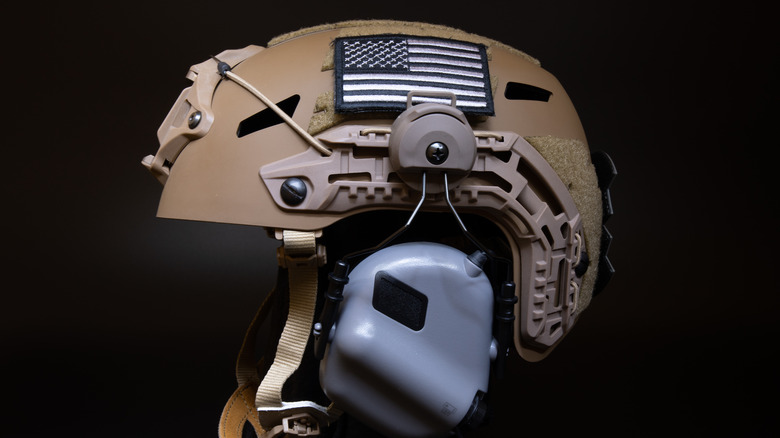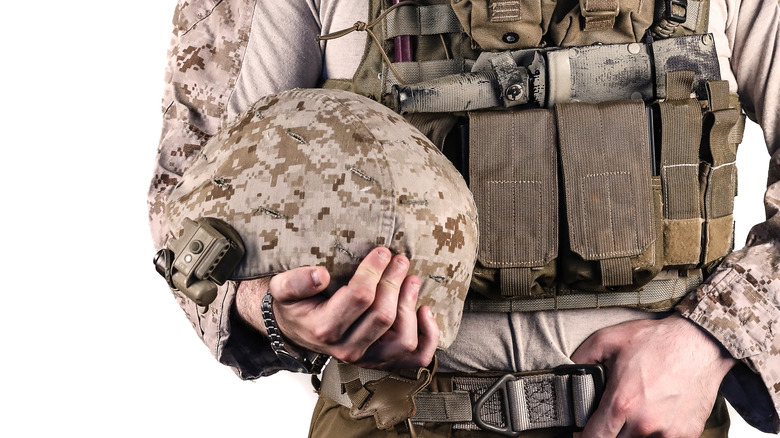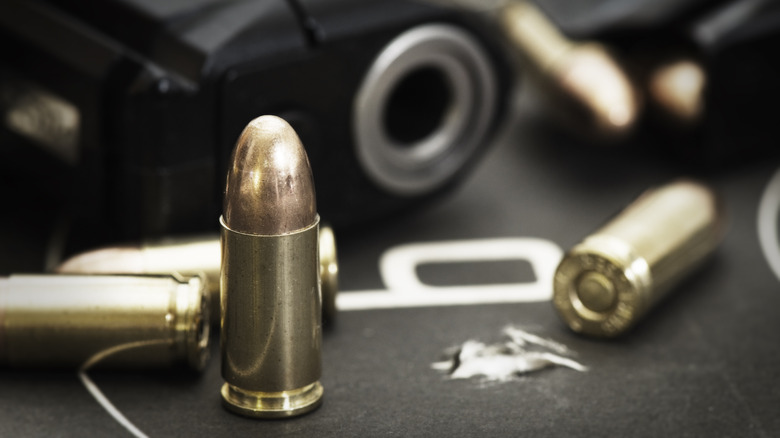Are Military Helmets Bulletproof? Ballistic Certifications, Explained
In just about any kind of high-intensity physical activity, protecting your head is of the utmost importance. Injuries to your limbs and torso can be mended, but a severe impact to your head can be permanently debilitating, if not fatal. While calling it a "physical activity" is perhaps underselling it a bit, this does include on-ground warfare. After all, not only are soldiers constantly running through dangerous terrain, but there is the ever-present risk of projectiles aimed at your head.
What differentiates warfare from other intense physical activities, aside from the obvious, is that you need a special kind of helmet to really keep you safe. Something like a padded construction helmet, angled dirt bike helmet, or a technologically advanced fighter pilot helmet simply wouldn't do the job because none of them have that one critical factor: none of them are designed to stop a bullet. By utilizing a very specific combination of resilient materials and impact-absorbing designs, military-grade ballistic helmets are the only thing protecting soldiers from high-speed projectiles. Of course, even a ballistic helmet can't stop every kind of bullet — the math of the situation depends entirely on the ballistic rating of the helmet in question.
Military-grade ballistic helmets are designed to catch bullets and safely distribute their energy
To clarify, a military-grade ballistic helmet is not "bulletproof," if only because that word implies the ability to deflect bullets entirely like Superman. It would take a sheet of very strong metal to deflect a bullet entirely, and even that would probably still get at least a little dented. Rather than deflecting bullets, the goal of a ballistic helmet is to receive the bullet in a way that minimizes damage to the wearer.
Ballistic helmets are constructed from a variety of highly resistant, yet also highly flexible materials such as aramid fibers, polyethylene, impact-resistant cushioning, and more. When a bullet strikes a ballistic helmet, the material flexes around it, kind of catching it in place, while the kinetic energy from the bullet is dispersed around the helmet and away from the point of impact. It's kind of like wearing a really strong Jell-o mold on your head.
It is worth noting, however, that even with the protective power of a ballistic helmet, soldiers can't just leave their heads wide open. While the helmet stops the bullet from reaching a soldier's head and dispenses a lot of the energy, the force of impact from a bullet can still cause severe physical trauma to a soldier's skull and neck. The amount of damage a soldier incurs from a stopped bullet depends heavily on their physical constitution, which makes designing universal ballistic helmets somewhat difficult.
There are five levels of ballistic protection defined by the National Institute of Justice
So, what kind of bullet can a ballistic helmet actually stop? That depends entirely on the helmet's NIJ level. These levels were originally established by the United States National Institute of Justice back in 2008, and they determine the speed and caliber of ammunition that a particular helmet can stand up to. The NIJ maintains a database of all certified ballistic equipment, with a threat level assigned to each.
The lowest level of ballistic helmet is an NIJ level IIA, which can resist small handgun rounds like 9mm and .40 S&W flying at around 1,225 feet per second. After that are level II helmets, which can safely intercept both 9mm and .357 bullets flying up to 1,305 feet per second. Above that is the NIJ level IIIA, the type most commonly used by the United States military, designed for more powerful handguns and low-grade rifles. Submachine guns and magnum revolvers firing rounds at up to 1,450 feet per second can't beat this helmet.
An NIJ level III helmet (which provides more protection than NIJ IIIA) is able to stop 7.62 and .308 high-powered rifle rounds flying at up to 2,780 feet per second. At the top of the order are NIJ level IV helmets, which are rated against M2 armor-piercing rounds flying at up to 2,880 feet per second. If this helmet can't catch a bullet, it's not a bullet that can be caught by a helmet.


